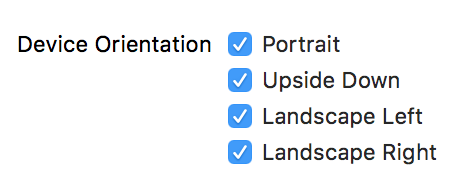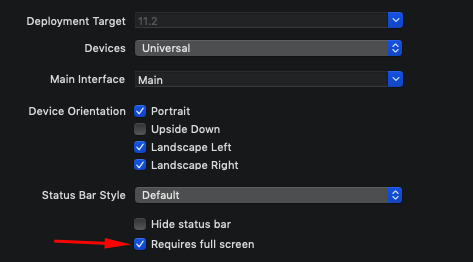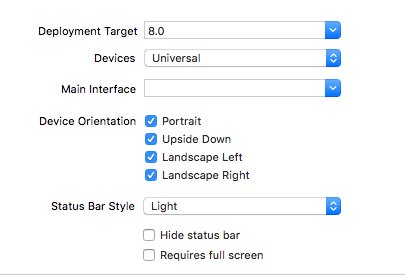I am working on an iPad app, using AutoLayout, where if the user enables a certain mode ("heads-up" mode), I want to support only portrait (or portrait upside down) orientation, and furthermore, if the device is in landscape, I'd like to automatically switch to portrait mode.
In the top view controller, I have the following:
- (NSUInteger) supportedInterfaceOrientations {
if (self.modeHeadsUp) {
return UIInterfaceOrientationMaskPortrait | UIInterfaceOrientationMaskPortraitUpsideDown;
} else {
return UIInterfaceOrientationMaskAll;
}
}
- (BOOL) shouldAutorotate {
return TRUE;
}
Based on answers I've seen elsewhere here, the answer seems to be that I should use "application setStatusBarOrientation". Therefore, in the method where the user has selected "heads-up" mode, I have included:
UIApplication *application = [UIApplication sharedApplication];
[application setStatusBarOrientation:UIInterfaceOrientationPortrait
animated:YES];
However, this simply doesn't seem to do anything. While I can physically move the device to get it to rotate into portrait, it doesn't do so automatically.
In fact, when in landscape mode after running the above code to attempt to programmatically set the orientation, when I query the application "statusBarOrientation" with the following code, it remains at "4" for landscape:
UIApplication *application = [UIApplication sharedApplication];
int orientation = [application statusBarOrientation];
self.movesTextView.text = [NSString stringWithFormat:@"ORIENTATION %d", orientation];
It seemed like maybe autolayout wasn't being triggered with the setStatusBarOrientation, so I attempted to add this code after, to no effect:
[super updateViewConstraints];
[self.view updateConstraints];
I realize Apple wants to leave device orientation in the hands of the user. However, I'd like to be able to support landscape mode when not in "heads-up" mode.
Am I missing something to be able to force orientation change?




